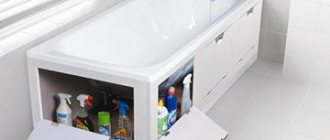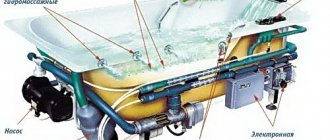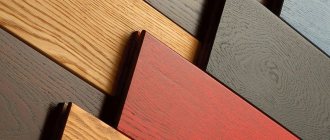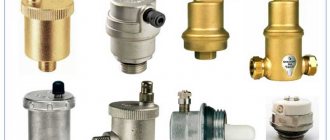Every owner wants the house to be cozy and surrounded by beautiful things. Designer heating radiators will provide a comfortable microclimate and impeccable style to the premises. They are classified according to type, purpose, shape, and material of manufacture. They are produced by world-famous companies.
Unlike an ordinary battery, which owners try to disguise in any way, a decorative heater is an important interior detail. You need to choose a device not only based on your own aesthetic preferences, but also taking into account technical requirements, acceptable operating conditions, connection features, and the style of the room.
Features of designer radiators
Designer radiators are heating devices that have an original appearance and shape. They can be steel, cast iron, wood, etc.
Decorative radiators differ from conventional batteries in the following ways:
- original appearance;
- increased requirements for operating conditions;
- higher cost.
To give the heating source an unusual appearance, designers use curved, intertwined and stamped elements. Often their imagination turns an ordinary heater into a real masterpiece of modern art, the purpose of which is impossible to guess at first glance. In addition to the aesthetic function that these devices perform, they can be used as storage for things, a mirror, a picture on the wall, a bench in the hallway, etc.
Abstract figures
If the great Salvador Dali could draw a clock sliding off a table, then why can’t a designer give a radiator the shape of a caterpillar divided into sections, or a rectangle consisting of cells? In these images, everyone will see something of their own, abstract or quite concrete.
Photo: decoist.com
Battery classification
Modern manufacturers offer owners of private houses, apartments and offices a variety of radiator models that differ in shape, material, size and style.
Principles of battery classifications:
- Purpose for specific rooms: hallway, bedroom, nursery, bathroom, kitchen.
- Installation location: under panoramic or regular windows.
- Installation method: baseboard, floor or wall.
- Shape: in the form of panels, benches or partitions, flat and ribbed.
- Size: narrow and tall.
- Material: steel, cast iron, aluminum.
- Style: retro, modern.
The most effective heating method is the use of convector radiators. They can be floor-mounted, wall-mounted or in-floor. Most often they are used in rooms where panoramic windows are installed.
Convectors built into the floor can be well camouflaged thanks to the wide color range of decorative grilles. Products can imitate the structure of natural wood. Convectors are equipped with fans to provide greater power. They are used for heating utility rooms (garages, boiler rooms), where aesthetic and hygienic requirements are lower than in residential ones.
Heating devices also include heated towel rails, which also provide heating. Electric models operate in a closed system. There are also devices operating in the DHW circuit. Both of them can be designer.
Convectors
Convector heating is the most modern way to maintain the desired temperature in an apartment.
The operating principle of convectors is that these systems use natural circulation of warm air to heat the space.
There are 2 main types of convector:
- Water;
- Electric.
Water convectors allow you to control the microclimate literally in manual mode, which is very convenient. But such systems are quite difficult to install; their installation requires a pipeline with hot water.
Electric models are much simpler in terms of installation; they are considered the most modern and easy to use. All they need is a connection to the mains via an outlet.
Convectors can even be installed on the floor - an ideal solution for those who want to free up space to the maximum and remove all unnecessary (and not entirely unnecessary) items from the interior.
By shape and type of construction
According to this parameter, designer radiators are: wall-mounted, floor-mounted, vertical, flat, sectional, panel, tubular, in the form of benches.
Wall mounted
Wall heaters mainly work on the convector principle and are available in two types: with and without liquid. The first type of radiator has built-in channels filled with water or oil.
Heating is carried out in three stages:
- First, the heat from the heating element is transferred to the liquid.
- There is an exchange of coolant with the body of the device.
- The sections heat the air in the room.
In each section of the non-liquid wall heater there is a heating element that provides air heating.
Vertical
Unique designer heating devices are designed specifically for modern interiors. In this regard, vertical radiators, which are distinguished by their small width and large height (up to 2200 mm), stand out especially.
Such heat sources look harmonious in narrow rooms with high ceilings and panoramic stained glass windows. The products heat the room due to infrared radiation emanating from the surface. Vertical decorative batteries are compatible with both central heating and electric heating. They can be used as main or auxiliary heating devices.
Bench radiators
Currently, the heating market offers a wide range of bench radiators, which can be tubular or panel. They are installed in entrance areas, hallways, locker rooms, receptions, living rooms, baths and saunas.
Marble or wood are used to make the top panel of decorative radiators. The device itself can be painted in any color according to the RAL catalog. A hidden connection allows you to disguise the pipes. A huge selection of dimensions and design options opens up wide possibilities for design solutions.
Sectional
They are an accordion-shaped assembly. The power and heat transfer of such radiators depend on the number of sections. This type of design allows you to create devices of different lengths, based on the area of a particular room.
Radiators made of cast iron are embossed, massive, and have a significant distance between sections. They have a reinforcing grid installed inside them that protects against water hammer. Heat-resistant rubber or caoutchouc must be laid between the sections.
Connections are considered the weakest side of devices. In addition, they are difficult to care for and difficult to paint and wash. Radiators are offered for sale in ready-assembled form with the optimal number of sections - 4–8 in each.
Modern models are also produced from aluminum and steel; they are lighter and more compact. They have a small distance between sections, and their small thickness allows them to be built into special niches.
Lamellar
They have a simple and fairly effective design; they are made in the form of a curved or straight pipe on which metal plates are attached. The devices are capable of forming a powerful thermal curtain and heat up to a very high temperature. The coolant moves through the pipe, and the plates enhance the convection process and distribute heat by heating the air in the room.
Characterized by increased reliability. The design of the plate radiator does not provide connections, except for the coolant inlet and outlet points.
Tubular
They are made from horizontal and vertical rows of pipes that are connected by welding. Despite the fairly strong mounting method, the design weakly resists pressure drops that are typical for central heating. Therefore, it is better to use them for autonomous heating and install them in closed systems.
The diameter of the pipes is small; hot water actively circulates through them. This option is considered beneficial in terms of efficiency. If desired, you can arrange the pipes in a horizontal or vertical position. Made from polymers and metals. They have an attractive appearance; models with design elements will cost more.
Panel
Modern appliances for heating residential and industrial premises. Such radiators are made of all-metal plates with a relief surface. They are identical in height and width to sectional and tubular models, but are thinner.
Special U-shaped steel ribs are inserted inside the panels, which improve convector heat transfer and increase the area of thermal energy transfer. The flat surface of the structures does not collect dust, but their working area is smaller than, for example, sectional ones. But they fit any interior and take up little space.
Methods of stylistic decoration
The simplest option for disguising an unsightly radiator that does not fit with the stylistic decision in the design of the room is considered to be a screen. This is most often a ready-made panel with holes that is used to cover the battery. It can be suspended or built into a special box, that is, it can completely hide the radiator. Screens are made of glass, MDF, metal. There are also wooden panels that look like “wicker”. The color of their surface is selected to match the furnishings of the room. Glass is ideal for modern “high-tech” styles. Metal screens are often made with forging elements. Floral motifs will fit in an original way into country or classic style. Radiators can be decorated not only with the help of screens. The simplest, budget-friendly methods include painting. Colored radiators are combined with the shade of curtains, walls, or make the radiator an accent of the interior. Sometimes the unit is covered with strips of wallpaper, thereby completely masking the surface. Black, gray, white radiators are combined with loft, minimalism, high-tech, futurism and avant-garde. Sometimes fabric curtains are used, which are attached to the windowsill. A similar cozy solution in the style of Provence, eclecticism, ethnicity or classic looks appropriate. Using putty, the drawing is given additional volume. Copper radiators are decorated with artificial patina, aging the surface.
In some cases, radiators are skillfully decorated to look like a “fireplace”. On the sides of the battery there are shelves for books and decorations. It’s worth remembering: the deeper the battery is hidden, the more it will affect its performance.
According to the material of manufacture
This is the main criterion by which radiators are classified.
Decorative models are made from various materials:
- become;
- aluminum;
- cast iron;
- metal;
- copper;
- glass;
- tree.
Steel
The distinctive features of steel tubular radiators are versatility, a wide variety of shades, sizes and connection types, unpretentiousness, low cost with good quality.
Such devices can operate in systems with operating pressures of up to 10 atmospheres, as well as in private homes. Fill with water or antifreeze. The production of tubular radiators is fully automated. They have all the advantages of premium designer batteries.
Prices for steel heating radiators
steel heating radiators
Aluminum
For the manufacture of aluminum radiators, two methods are used: casting and extrusion. In the first method, products are made from aluminum alloy with the addition of 12% silicon. This gives the radiator strength and allows you to preserve the thermal conductivity of the metal. The advantages of such devices are good heat transfer and efficiency.
Extrusion models are made in several stages:
- Horizontal collectors are cast.
- The main part of the body with fins is formed by extruding aluminum using an extruder.
- Then all the elements are connected by gluing, welding, and flaring.
As a result, the collector walls are much thinner, which reduces equipment weight, thermal output and operating pressure. The models are weakly resistant to water hammer, so it is not advisable to use them for centralized systems. However, they are perfect for installing individual heating.
Prices for aluminum heating radiators
aluminum heating radiators
Cast iron
Cast iron radiators are a timeless classic. Unlike the old Soviet “accordions”, modern cast iron batteries can have different designs, suitable for both palace and neoclassical interiors. They are also produced in various sizes and can be painted in different colors. Today, aged battery options are relevant.
Other advantages of cast iron heaters include:
- resistance to aggressive coolants;
- durability;
- high percentage of thermal radiation.
With the help of these devices you can create a truly cozy atmosphere in your home.
Bimetallic
Bimetallic radiators have a core made of steel or copper pipes and an aluminum body. This promotes efficient heat transfer. Hot water passes through the steel core, quickly heating the aluminum shell and the air in the room. Such devices are not subject to corrosion and can withstand pressures of up to 100 atmospheres.
Thanks to the material, the radiators are very light. The figured shell of the core and the intricate shape of the body look elegant and stylish.
Prices for bimetallic heating radiators
bimetallic heating radiators
Copper
The advantages of copper heaters are their attractive appearance, durability and resistance to corrosion. Another positive property of the products is environmental friendliness, since copper can prevent the reproduction and activity of various bacteria.
This metal is durable and reliable. With proper use and care, it will last up to 50 years. It is not afraid of aggressive low-quality coolant. Like gold and silver, copper has good thermal conductivity.
The disadvantages are: high cost and the need to use special equipment during installation.
Glass
Such a radiator, like any design device, serves not only for heating, but also for decorating the room.
The operating principle of glass heaters is as follows:
- The tempered glass panel is connected to the power supply;
- when heated, it transfers heat to the upper part of the device, which is made of decorative glass.
This type of radiator includes electric heating devices made from tempered glass. They look very nice.
Wooden
Wooden elements have always given the interior a feeling of comfort and peace. Radiators are practical, their service life is 30 years. The equipment is environmentally friendly, because natural wood of different species is used for production: makore, wenge, white ash, oak, maple, American walnut, beech, anegri.
Radiators have a moisture-resistant surface, they are easy to care for and wipe clean from dust and dirt. The front panel of some models, for example, the Loten brand, is easily removable, which allows you to wash the device.
In terms of aesthetics, wooden decorative heaters are much superior to conventional batteries. They can be made in various colors, including silver or gold.
Heating devices made of wood will fit perfectly into a city apartment decorated in eco-style, but they will look best in private houses made of logs or timber.
How to choose the right one
Before you buy and install designer heating radiators in your apartment, you need to make a choice. Well-known companies today produce such heating devices: AEON, Arbonia, BREM, Broner, Cordivari, Demir, Dokum, Exemet, Fondital, Guratec, Hidria, Klima, Instal, Projekt, IRSAP, ISAN, Jaga, Kermi, MlniB, Purmo, RETROstyle , Runtal, SAVVA, Terma, Varmann, Viadrus, Zehnder, Rad Steel.
All of them offer quite decent products, which are sold in construction stores or branded heating equipment boutiques.
There are rules for choosing designer heaters that should not be neglected.
- Products must correspond to the general style of the premises.
- Important parameters are operating pressure and power, that is, heat transfer efficiency. They must ensure the normal functioning of devices in the heating system of the house.
- In terms of design and dimensions, the products must fit perfectly into the living space and provide good heat transfer.
- Designer batteries must have instructions indicating technical characteristics.
- The units must be free of defects.
- The threads at the connection points between the radiators and the pipe cannot be damaged.
The power of the heater depends on the type of building (panel, brick or wood), the number, area and thermal permeability of windows, the number of doors and walls. For example, for a standard apartment with a ceiling no higher than 3 m, a radiator with a power of 100–130 W/m2 is suitable.
Power characteristics should be increased if the following factors are present:
- two windows - you will need to increase heat transfer by 20%;
- closed front radiator panel with horizontal convection openings - by 15%;
- the presence of heavy multi-layer curtains - by 15%;
- elongated room configuration - by 10%.
How to make an ordinary heater into a designer one with your own hands
Decorative heating sources are often made according to individual projects. Such devices are very expensive. But it is possible to turn a simple battery into an unusual designer product.
The easiest way to do this is to paint the device in its original color: blue, green, purple, maroon, brown. Also, by applying textured patterns, you can create an imitation of steel, wood and other materials.
Cast iron batteries are installed in ancient mansions and buildings from the beginning of the last century. Over time, they become unattractive, but they can be restored and made designer.
Restoration of a cast iron battery is carried out in three stages:
- cleaning the surface with sandpaper;
- application of the selected paint;
- complete drying.
Before starting work, you should turn off the heating, because the paint must dry naturally. If you have artistic skills, you can draw various ornaments on the battery, after first drawing the outlines with a pencil. Interesting patterns are obtained using gilding.
By the way, you need to select the most durable paints so that they do not change color when exposed to high temperatures. To decorate radiators, you can use ready-made stencils and stickers, which are attached using a special heat-resistant glue. At the last stage, the battery is coated with colorless varnish.
Cost of designer radiators of different types
Decorative heating devices are more expensive than conventional ones. The price is influenced by the dimensions of the product, material of manufacture and decorative features.
Cost of radiators made of different materials:
- Bimetallic will cost 2,700–15,000 rubles.
- Steel tubular radiator - 2700–44200 rubles.
- Glass device - 19,200–49,800 rubles.
- Designer battery made of cast iron - 6600–172100 rubles.
- A wooden battery can be bought for 23,500–46,900 rubles. Read the solid fuel boiler controller on our website.











